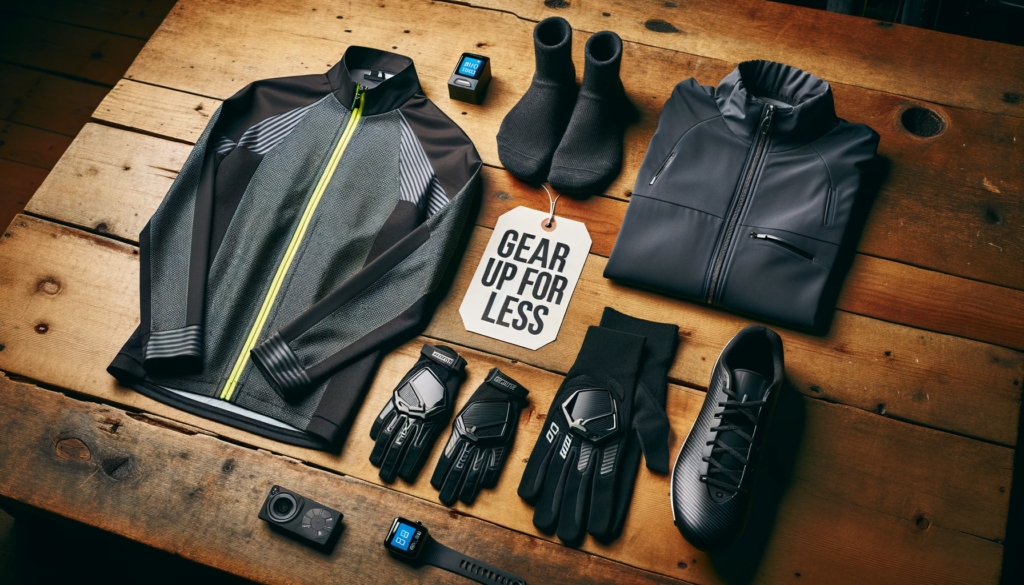In a world that’s constantly on the move, the evolution of transportation has never been more exciting. Whether you’re a dedicated cyclist, an urban commuter, an e-bike enthusiast, or a traveler seeking new adventures on two wheels, the emergence of electric bikes (e-bikes) has completely transformed the way we ride. This article is your gateway to exploring the remarkable innovations in the e-bike industry that are taking cycling to electrifying new heights.
The E-Bike Innovations: A Glimpse into the Future
The bicycle has come a long way from its humble beginnings. With the introduction of electric bikes, we’re witnessing a revolution in the world of cycling. These innovative machines blend human power with electric assistance, promising a thrilling ride for all.
But what exactly sets them apart from traditional bicycles? Let’s delve into the key distinctions:
1. The Power of Pedal-Assist
E-bikes, in their various forms, are designed to provide pedal assistance, making your ride more effortless and enjoyable. Unlike traditional bikes, e-bikes have a motor that kicks in when you pedal, helping you conquer challenging terrains and reach your destination with ease. This feature is a game-changer for urban commuters and travelers alike.
2. Enhanced Range and Speed
One of the most remarkable e-bike innovations is the ability to cover longer distances at higher speeds. With electric support, you can easily maintain speeds of 20 mph or more, making your daily commute or leisurely ride more efficient and time-saving.
3. Eco-Friendly Commuting
E-bikes are not only practical but also environmentally friendly. They emit zero emissions, contributing to a cleaner, greener world. As we become more conscious of our carbon footprint, e-bikes are leading the way in sustainable transportation.
E-Bike Innovations Redefined: What Makes Them Stand Out

Now that you’ve had a glimpse of the e-bike revolution, let’s dive into the innovations that are shaping the industry and enhancing the riding experience:
1. Motor innovations
One of the most important innovations in e-bikes has been the development of more powerful and efficient motors. Early e-bikes were powered by hub motors, which are located in the front or rear wheel. Hub motors are relatively simple and inexpensive to produce, but they can be less efficient and less powerful than mid-drive motors.
Mid-drive motors are located in the center of the bike, between the pedals and the cranks. This gives them several advantages over hub motors, including better weight distribution, more efficient power transfer, and better traction on hills.
In recent years, we’ve also seen the development of dual-drive e-bikes. These bikes have two motors, one in the front wheel and one in the rear wheel. This gives them even more power and torque, making them ideal for heavy-duty applications such as cargo hauling and mountain biking.
Another important innovation in motor technology is the development of torque-sensing motors. These motors are able to sense the amount of torque you’re applying to the pedals and provide assistance accordingly. This makes for a more natural and responsive ride.
2. Battery innovations
Another key area of innovation in e-bikes is battery technology. Early e-bikes were powered by lead-acid batteries, which are heavy and have a short lifespan. Today, the vast majority of e-bikes are powered by lithium-ion batteries, which are lighter, more energy-dense, and have a longer lifespan.
In recent years, we’ve also seen the development of solid-state batteries. Solid-state batteries are lighter, safer, and have a longer lifespan than lithium-ion batteries. However, they’re also more expensive and not yet widely available in commercial e-bikes.
Another important innovation in battery technology is the development of swappable batteries. This allows riders to swap out their empty battery for a full one in a matter of seconds, without having to wait for their battery to charge.
3. Frame innovations
E-bike frames have also evolved significantly in recent years. Early e-bikes were typically made of heavy steel frames. Today, most e-bikes are made of lightweight aluminum or carbon fiber frames. This makes them easier to pedal and more comfortable to ride.
We’ve also seen the development of more aerodynamic e-bike frames. These frames are designed to reduce drag and improve efficiency, especially at high speeds.
Finally, we’ve seen the development of full-suspension e-bikes. These bikes have suspension on both the front and rear wheels, which makes them more comfortable and capable on rough terrain.
4. Smart Integration
Modern e-bikes are equipped with cutting-edge technology, such as smartphone connectivity and GPS tracking. You can plan your routes, monitor your performance, and stay connected while on the go. It’s like having a personal cycling assistant right at your fingertips.
3. Multiple Riding Modes
E-bikes offer various riding modes, allowing you to customize your cycling experience. You can choose between eco-friendly modes for extended battery life or power-packed modes for maximum speed and acceleration. It’s all about tailoring your ride to your preferences.
E-Bikes for Everyone: A Diverse Range of Styles

E-bikes are not one-size-fits-all. The market caters to a wide audience, and you’ll find a plethora of styles and designs to choose from:
1. Commuting E-Bikes
Commuting e-bikes are designed to make your daily commute easier and more enjoyable. They’re perfect for navigating city streets, tackling traffic, and arriving at your destination fresh and on time.
They typically have comfortable seats, upright riding positions, and fenders to keep you dry. Some commuting e-bikes also have features like lights, baskets, and racks to make it easier to carry your belongings.
2. Mountain E-Bikes
For the adventure-seekers, mountain e-bikes offer exceptional off-road capabilities. Mountain e-bikes are designed to take you off-road and help you explore new trails.
They typically have full-suspension frames, powerful motors, and knobby tires to give you the traction and control you need to ride over rough terrain. Mountain e-bikes can also be used for commuting, but they’re not as comfortable or efficient on paved roads as commuting e-bikes.
3. Folding E-Bikes
Folding e-bikes are the epitome of convenience and portability. They can be folded up and easily transported in a car, on public transportation, or in your home. Folding e-bikes are a good choice for people who live in urban areas or who need to take their bikes with them on the go.
4. Cargo E-Bikes
Need to transport groceries, luggage, or your furry friend? Cargo e-bikes are your solution. They’re designed to carry heavy loads effortlessly, making errands a breeze. They typically have large baskets, racks, and powerful motors. Cargo e-bikes are a good choice for people who need to carry groceries, kids, or other gear by bike.
5. Step-Through E-Bikes
Step-through e-bikes have a low frame that makes it easy to get on and off. They’re a good choice for riders of all ages and abilities, including seniors and people with disabilities.
The Future of Cycling: Sustainability and Health Benefits
As e-bikes continue to rise in popularity, they bring with them a multitude of benefits. From a sustainability standpoint, they’re reducing our reliance on fossil fuels and decreasing air pollution. In terms of personal health, e-bikes offer an excellent way to stay active and fit, promoting a healthy lifestyle.
E-bikes are not just a means of transportation; they’re a lifestyle choice, a source of joy, and a solution to many modern-day challenges. Whether you’re a commuter looking to beat traffic, an outdoor enthusiast seeking adventure, or someone who simply loves the feeling of the wind in your hair as you cruise through the city, e-bikes have something for everyone.
Get ready to elevate your cycling experience, one pedal at a time, with the incredible innovations of e-bikes.




